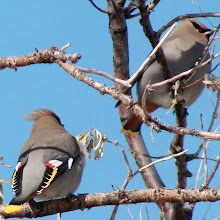This Western North American member of (you guessed it) the Boraginaceae, is named after the shape of its inflorescence (the collection of flowers). This photo illustrates it nicely: scorpioid cyme.
But it turns out that many, many members of the Boraginaceae share this same delightful scorpion-tail arrangement, which in botanical nomenclature is called a scorpioid cyme (or cincinnus). 'Cymes' are a kind of inflorescence that don't continue to grow flowers indefinitely (thus, they are determinate). Scorpioid refers to the rather photogenic coiling of the inflorescence (like a scorpion's tail).
For the longest time, taxonomists couldn't decide whether to call these helicoid or scorpioid cymes (meanwhile, life went on), but in a 2003 article, Matt Buys and Hartmut Hilger came to the rescue and decided that they're all scorpioid (maybe they're just 80s-metal fans).
At the Carrizo Plain two weekends ago, Amsinckia menziesii was very common on the landscape, forming colonies of moderate density that showed up as dull orange patches (the foliage is fairly dark green). It struck me that plants ranged from near a meter tall to just a few inches high, apparently depending on the growing conditions. Perhaps this ability to tolerate a wide variety of environmental conditions has facilitated their invasion of eastern Australia. Here is a relatively isolated clump of tallish fiddlenecks:
The species epithet refers to Archibald Menzies, Scottish naturalist extraordinare.
Fiddleneck seeds provide an important food source to the indisputably attractive Lawrence's Goldfinch. I saw four of these handsome little devils during my brief stay, foraging a small patch of none other than... Amsinckia menziesii.






No comments:
Post a Comment